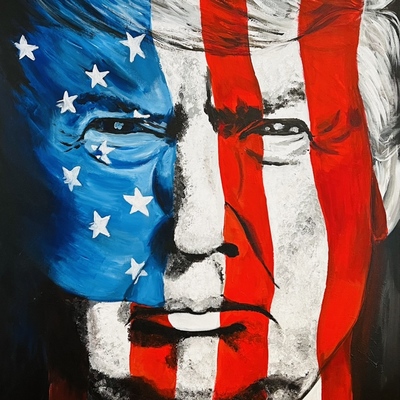
Trump Strikes Asymmetric Trade Deals with Philippines and Indonesia Ahead of August Deadline
Trump's Southeast Asian Gambit: The Hidden Costs of America's New Trade Leverage
The sun beats down on the sprawling port of Jakarta as dockworkers load containers marked for U.S. destinations. Starting next week, each will carry an invisible burden: a 19% tariff that represents the new price of admission to America's consumer market.
President Donald Trump, wielding tariffs like chess pieces, has secured what the White House calls "historic" trade agreements with the Philippines and Indonesia this week, just days before his self-imposed August 1 deadline for implementing a sweeping tariff regime. The deals have sent ripples through global markets and rewritten the rules for two of Southeast Asia's largest economies.

"Zero or Nineteen": The New American Ultimatum
The agreements follow a strikingly similar template: both Southeast Asian nations will eliminate virtually all tariffs on American goods while facing a flat 19% duty on everything they ship to the United States.
"We've secured complete market access," Trump declared from the Oval Office Tuesday, flanked by Treasury Secretary and trade officials. "No more one-sided deals where we get the short end. It's reciprocity, pure and simple."
But trade experts see something more complex—and potentially more disruptive—in the fine print.
"This isn't reciprocity in any traditional sense," says Dr. Amanda Chen, senior fellow at the Peterson Institute for International Economics. "It's a fundamental power play that leverages market access against strategic concessions. The Philippines and Indonesia each export far more to the U.S. than they import, giving Washington enormous leverage."
The numbers tell the story. In 2024, U.S. exports to Indonesia totaled just $10.2 billion while imports reached $28.1 billion. With the Philippines, American exports were $9.2 billion against $14.2 billion in imports.
Beyond Tariffs: The Strategic Chessboard
For Philippine President Ferdinand Marcos Jr., the negotiations involved delicate calculations that extend well beyond trade balances.
"Manila sees this as purchasing insurance," explains former U.S. diplomat Richard Fontaine, now with the Center for Strategic and International Studies. "The Philippine government is effectively trading economic concessions for stronger security guarantees in the South China Sea, where Chinese vessels have become increasingly assertive."
A senior Philippine trade official, speaking on condition of anonymity because they weren't authorized to discuss sensitive negotiations, confirmed this calculation: "We understand the economic costs, but we're operating in a region where security partnerships have real value. Sometimes you have to make difficult choices."
The Indonesian agreement reveals even more about Trump's strategy. Beyond eliminating tariffs, Jakarta has committed to large-scale purchases of Boeing aircraft, American liquefied natural gas, and agricultural products—deals potentially worth tens of billions.
More significantly, Indonesia agreed to supply critical minerals to the United States under preferential terms, with a crucial caveat: materials containing more than 25% Chinese-origin components could face duties up to 40%.
"This is about battery supply chains, plain and simple," says Michael Sullivan, chief commodities strategist at Morgan Stanley. "Indonesia controls about 42% of the global nickel market crucial for EV batteries. By securing preferential access while penalizing Chinese-processed materials, the U.S. is effectively inserting itself into a supply chain China has dominated."
The ASEAN Domino Effect
What happens in Manila and Jakarta may not stay there. Trade representatives from Vietnam, Malaysia, and Thailand are reportedly scrambling to assess their positions as the August 1 deadline approaches.
"These countries now face a stark choice," says former U.S. Trade Representative Susan Schwartz. "Either accept similar one-sided terms or risk facing the full force of Trump's tariff regime—potentially up to 32% for nations without deals."
The pressure extends beyond tariffs. Officials from Vietnam, which has emerged as a major manufacturing alternative to China, report intensified U.S. customs surveillance, including factory inspections aimed at preventing Chinese goods from being rerouted through Southeast Asian supply chains.
"What we're witnessing is the active fragmentation of East Asian economic integration," says Dr. Kishore Mahbubani, former Singaporean diplomat and dean of the Lee Kuan Yew School of Public Policy. "Countries are being forced to choose sides in ways that undermine decades of careful balancing."
Beijing's Calculation
China has responded with calculated restraint so far, though officials have warned of potential "countermeasures" if Chinese interests are directly threatened. The critical minerals provisions, which explicitly target Chinese processing capacity, may prove the most sensitive flashpoint.
"Beijing understands that a direct confrontation benefits nobody," says Zhang Wei, economics professor at Peking University. "But there are real concerns about U.S. attempts to weaponize supply chains and fragment the regional trading architecture China has carefully cultivated through initiatives like RCEP."
Some analysts see the potential for more subtle Chinese responses, including tightened inspection regimes for American goods entering through the back door of tariff-free Southeast Asian markets.
Investment Implications: Three Scenarios
For investors navigating this shifting landscape, strategists outline three potential scenarios for the coming year:
In the base case (60% probability), the tariffs take effect as announced on August 1, with Southeast Asian partners largely complying despite some implementation delays. This scenario favors U.S. exporters while pressuring companies dependent on regional manufacturing.
An upside case envisions Indonesia striking follow-up joint ventures for mineral processing that qualify for tariff exemptions, potentially boosting companies like Vale Indonesia and Freeport-McMoRan while accelerating the energy transition supply chain.
The downside scenario involves Chinese retaliation, particularly targeting agricultural exports that might be trans-shipped through Singapore or other regional hubs. This could trigger broader market volatility and strengthen the dollar as safe-haven flows accelerate.
"The key for allocators is staying nimble," advises Morgan Stanley's global strategy team. "These agreements aren't one-off events but rather Act I of a structurally different, bloc-based trade order that will continue to evolve."
The Road Ahead: Signposts to Watch
Critical milestones loom in the coming months. The tariffs formally enter force on August 1, offering the first concrete data on trade flows and potential demand destruction. The Philippine Senate must ratify key provisions this fall, with particular attention to whether the "zero tariff" pledge holds for sensitive sectors like automobiles and medical technology.
Indonesia's parliament will consider an Omnibus Bill on Digital Trade in Q4 that could roll back data localization requirements—a development closely watched by cloud computing giants with regional expansion plans.
Perhaps most significantly, market participants should remain alert for potential Chinese retaliation, particularly targeting U.S. agricultural exports, energy shipments, or critical mineral flows.
"We're entering uncharted territory," notes veteran trade attorney James Morrison. "The WTO dispute resolution mechanism is all but certain to be engaged, but those processes move far too slowly to provide meaningful near-term clarity. For now, bilateral leverage and political calculations will drive outcomes."
As container ships continue loading in Jakarta and Manila, one thing becomes clear: the rules-based trading system that governed global commerce for decades is being rapidly rewritten, with profound implications for companies, investors, and entire nations caught in the crosscurrents of great power competition.
Investment Thesis
| Aspect | Details |
|---|---|
| Deal Structure | - U.S. tariffs: 19% flat on all imports from Philippines & Indonesia. - Partner tariffs: 0% on U.S. goods (Philippines fully, Indonesia >99%). - Extras: Military basing rights (PH), mineral/MOUs (ID), strict rules-of-origin. |
| Trade Impact (2024) | - U.S. exports: $19.4bn (PH+ID). - U.S. imports: $42.3bn (PH+ID). - Balance: -$22.8bn combined. |
| Strategic Sectors | - Semiconductors: 30% U.S. imports from PH (back-end packaging). - Nickel/Cobalt: 42% U.S. supply from ID (EV batteries). - Apparel: 8% U.S. imports from ID (margin squeeze for Nike/Gap). |
| Winners | - U.S. exporters: Boeing (BA), agribusiness (ADM, BG), LNG (LNG, CVX). - Mineral plays: Vale Indonesia (VLDNY), Freeport (FCX), Tesla/Ford (nickel access). |
| Losers | - U.S. retail: Nike (NKE), Gap (GPS) face 19% cost hike. - Chinese-linked firms: Penalized up to 40% if >25% Chinese content. |
| Macro Effects | - Currencies: PHP/IDR expected to weaken (USD/PHP 63–65; USD/IDR 17,100). - Commodities: Nickel prices may rise ($22–24k/t). |
| Risks | - WTO litigation: U.S. violates MFN rates (3.4% avg). - Chinese retaliation: Possible tariffs on U.S. ag/LNG. - Implementation gaps: PH auto quotas, ID data-localization delays. |
| Investor Takeaways | - Overweight: U.S. exporters, critical minerals. - Underweight: ASEAN consumer exporters. - Watch: China’s response, PH/ID currency moves. |
This article represents analysis based on current market data and expert perspectives. Past performance doesn't guarantee future results. Readers should consult financial advisors for personalized investment guidance.